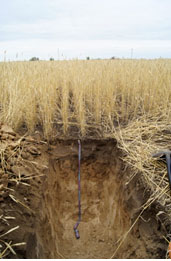Microelements in the agricultural landscapes of the Altai region
DOI:
https://doi.org/10.31251/pos.v6i1.188Keywords:
arable soils; grain; chemical elements; ecological and biogeochemical assessment of soils; sanitary and hygienic assessment of soilsAbstract
The aim of the study was to assess ecological, biogeochemical and sanitary-hygienic aspects of arable soils of the Altai region and spring wheat grain produced there.
Location and time of the study. The representative study sites of arable land were located in various agroecological zones of the Altai region: Kulundinskaya (dry steppe on chestnut soils of the Kulunda lowland), Rubtsovskoye (arid steppe on chernozems of the southern Priobskoye plateau), Zarinskaya (deciduous forests and steppe meadows on leached chernozems of the Bie-Chumyshskaya elevated plain and podzolized chernozems and dark gray forest soils of the Salair Foothills), Piedmont (meadow steppe on the chernozems of the Prealtai Plain), Priobskaya (split steppe on ordinary chernozems of the Priobsky plateau), Aleiskaya (moderately arid steppe on ordinary chernozems of the Priobsky plateau), Biyskaya (forest steppe on leached and gray forest soils of the Bie-Chumysh Upland). The research was carried out in 2018.
Methods. The content of trace elements in soils and wheat grain was determined by atomic emission and atomic absorption spectrometry according to PND F 14.1:2:4. 139; 140-98; НСАМ №450С; РД 52.24.479-95.
Results. It was found that in the arable soils of the Altai region the elements, necessary for plants, animals, and humans, were contained in optimal quantities (average content of Mn 714, Zn 65, Cu 25.7, Co 12.3 mg/kg), maintaining the normal functioning of living organisms. Most toxic elements were found at the levels, comparable with average concentrations in soils of the world and with the data for uncontaminated soils in West Siberia, not exceeding the maximal permissible concentrations. The average concentrations of Cd, Pb, As and Hg in the studied soils were 0.089, 13.6, 5.0, 0.037 mg/kg, respectively. No biogeochemical province had been identified for any of the elements. The studied soils have a fairly high buffering capacity for heavy metals. The chemical elements’ content in the spring wheat grain, the main crop in the region, was close to the corresponding world data for grain. The amount of regulated substances (lead, cadmium, mercury, arsenic) meets domestic standards and the requirements of the Technical Regulations of the Customs Union "On Grain Safety".
Conclusions. The arable soils of the Altai region are not contaminated with heavy metals. Trace elements such as manganese, zinc, copper, cobalt are contained in soils in optimal quantities for living organisms. However, using the grain as monofeed can result in Co deficiency in animals. The content of chemical elements is soils resulted from the initial content of elements in soil-forming parent rocks. The degree of heavy metals’ buffering by the studied arable soils, depending of the metal, ranged from medium to high.
Downloads

Downloads
Published
How to Cite
Issue
Section
License
Copyright (c) 2023 The Journal of Soils and Environment

This work is licensed under a Creative Commons Attribution 4.0 International License.






